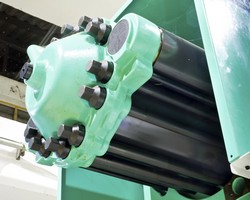Knitting makes its way into composites
Fibre-reinforced composites with a thermoplastic polymer matrix are well suited for use in the transport and energy industries. To date, manufacture of such composites involves joining a number of separate simple parts into a single complex one, which is on the one hand labour intensive and time consuming and on the other can lead to structural failure. The EU-funded project MAPICC 3D(opens in new window) (One-shot manufacturing on large scale of 3D up graded panels and stiffeners for lightweight thermoplastic textile composite structures) developed a one-shot manufacturing process for 3D preforms that avoids all these joining steps, thus decreasing production time. In particular, this automated process allows making parts from composite fibres such as glass fibre in complex shapes. Unlike traditional technology used for manufacturing composite parts, 3D composite knitting can deliver parts that require no cutting or joining directly from the knitting machine. MAPICC 3D's innovative concept enables the precise steering of fibres in three dimensions in a fully interlaced manner to tailor mechanical properties. Modelling tools predict the final properties of designed 3D preforms and composites, enabling easier design of customised end products. In addition, sensor, tube or wire integration ensures good control of preform quality during production or monitoring of composite integrity during use. Project members developed a highly efficient automated and adaptable manufacturing system for high-volume production of textile preforms. The knitted composites combine warp insertion, weft insertion and knitting techniques to create real 3D knitted structures. To demonstrate the feasibility of the production process, MAPICC 3D members developed different prototypes linked to the automotive and other industries. Volvo replaced the driver's seat plate of its truck vehicle with a piece of knitted fibreglass, Coexpair developed an F-shape composite structure using woven carbon fibres, and Finieris produced high-performance plywood made by fibreglass and a polypropylene composite sandwich panel. MAPICC 3D's textile technology improves productivity by 30 % compared to traditional 2D preform technology and promotes production of low-cost composites. The developed lightweight composites with enhanced mechanical properties are set to replace metal structures in the automotive, railway and energy industries.







